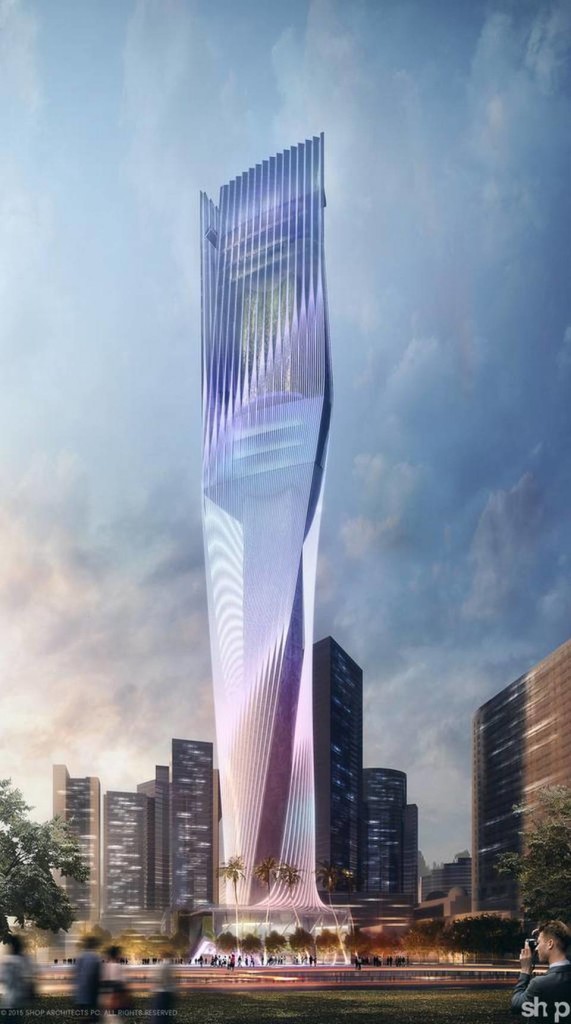
Will Miami become the city of (too many) lights?
Of all the things Miami desperately needs right now–a decent public transportation system, better police-community relations, a plan to address the breathtaking chasm between the haves and the have-nots–a gaudy 633-foot billboard/building overlooking one of the city’s most troubled neighborhoods is not among them. Yet we seem well on our way to getting one.
According to developer Michael Simkins:

“The iconic tower will elevate the city’s brand on a global level, enhance the city skyline, and complement and enhance the surrounding community.”
Rarely if ever does one encounter so much business-speak BS expressed in so few words.
The BS starts from the second word. Buildings, like works of art or literature, become masterpieces or icons only after they have withstood the test of time. Paris’s Eiffel Tower, the Golden Gate Bridge in San Francisco, the Empire State and Flatiron Buildings in New York City, the Washington Monument, are true icons of their respective cities. Even the Freedom Tower in Miami can be considered iconic of Miami.
All these edifices share attributes that are in sharp contrast to the proposed “Innovation Tower.” History. Dignity. The absence of crass commercialism.
Developers or even architects don’t decide by proclamation what buildings will become icons anymore than a writer or a painter gets to decide that his or her work is a masterpiece. Not Leonardo. Not Michelangelo. Not Shakespeare. Not Cervantes. Not Van Gogh. Not Frank Lloyd Wright.
That right belongs to the beholders or the readers, the people of the city, the nation, and the world–and the critics. Instant icons don’t exist, much less iconic buildings that haven’t yet been built.
Then there is the matter of elevating the city’s brand, on a global level no less. Is a city a brand? Does our city’s “brand” need elevating?
Few cities in the world have greater name recognition than Miami. But most people around the world who can afford to come here do so for the sun and the fun. With Art Basel, a great book fair, the Art Deco district, Miami has been trying hard to change that stereotype.
How is a building with a zillion ever changing LED billboards, as tacky or tackier than the worst that Las Vegas has to offer, help elevate our brand?
As for “enhancing the local community,” that might be the biggest bunch of BS of all. The history of Miami’s depressed community is strewn with promises that turned to dust. In this case, the promise of jobs is the biggest lure. But, with the possible exception of low paid labor, how many Overtown residents will be deemed qualified for such a high-tech, upscale development?
What the dazzling commercial billboards will certainly accomplish is to show the residents of the surrounding community all the brands they can’t afford to buy, all the shows for which they can’t afford a ticket, all the luxury only a stone throw’s away. Except for the lucky few that can get in on the action, what the proximity of so much glitz will enhance is a feeling of relative deprivation. The poor never feel as poor as when the symbols of wealth are rubbed in their face.
Beyond the transparent BS, the real purpose of this project is to enhance the net worth of the developer and whatever investors he may have. They must be hoping that the myriad bright advertising billboards will bring in rich profits for many years.
Although there is opposition to the Innovation Tower and the developer has not yet received final approval, I would not bet against its construction. Money talks, and in Miami even louder than in most places. And, in this city, developers usually get their way, no matter what monstrosity they want to inflict upon the urban fabric.


